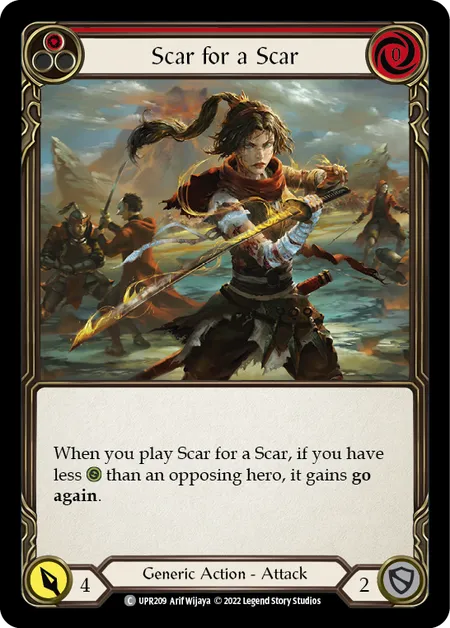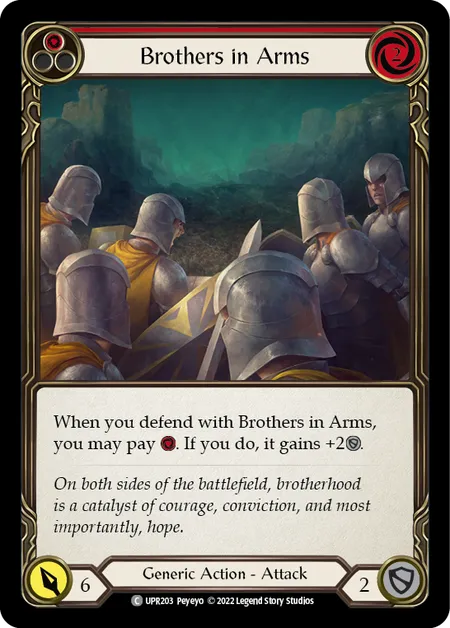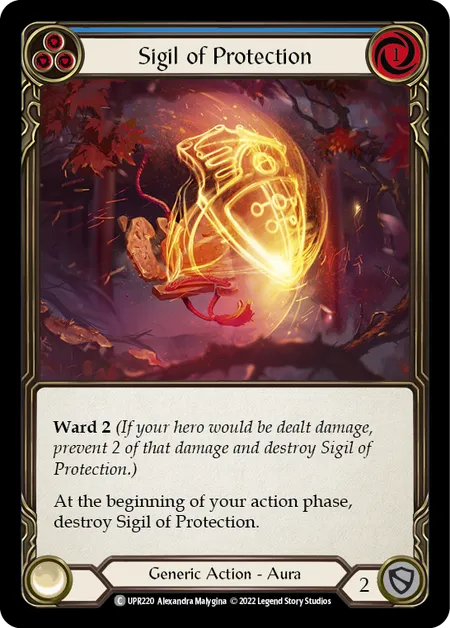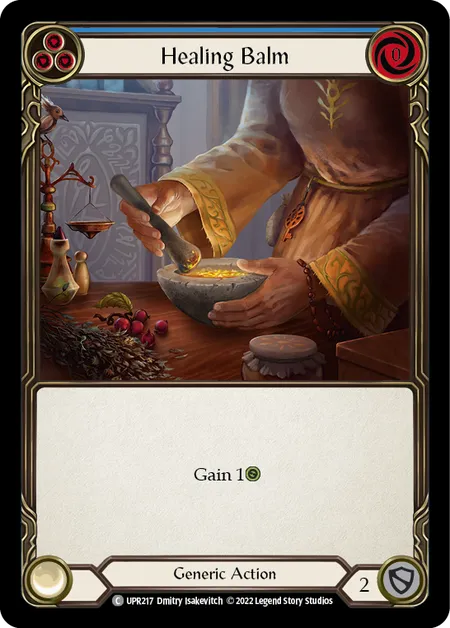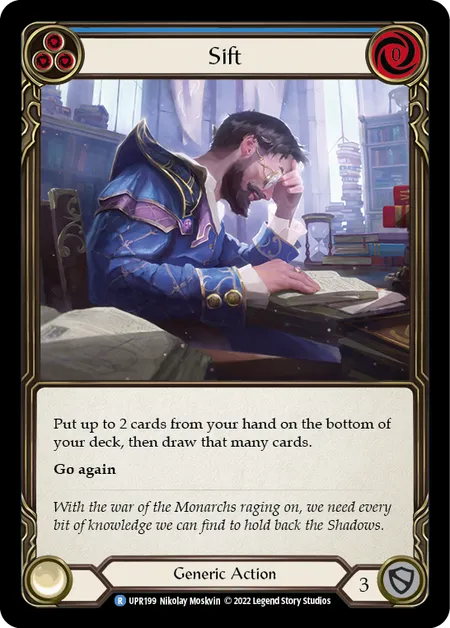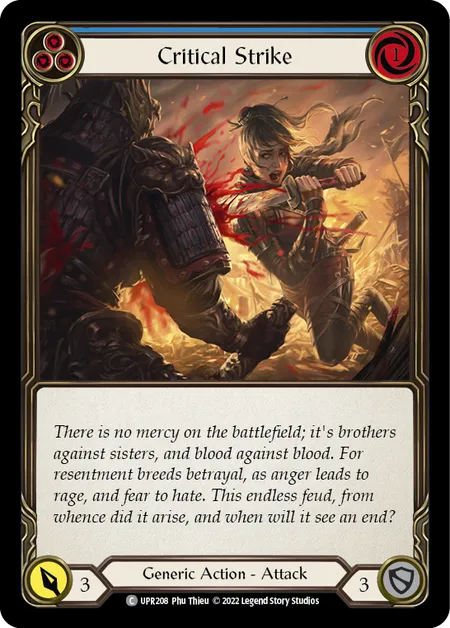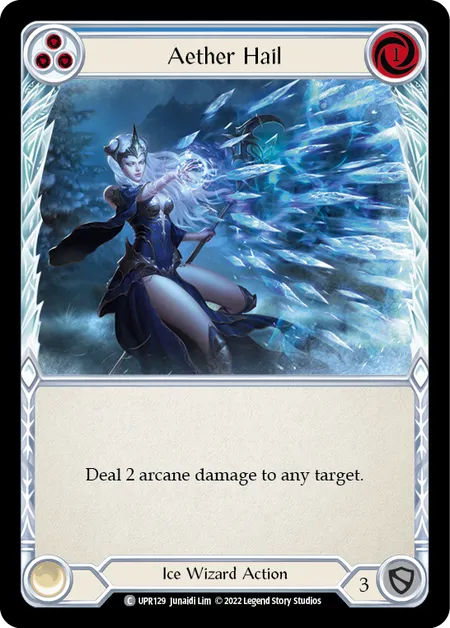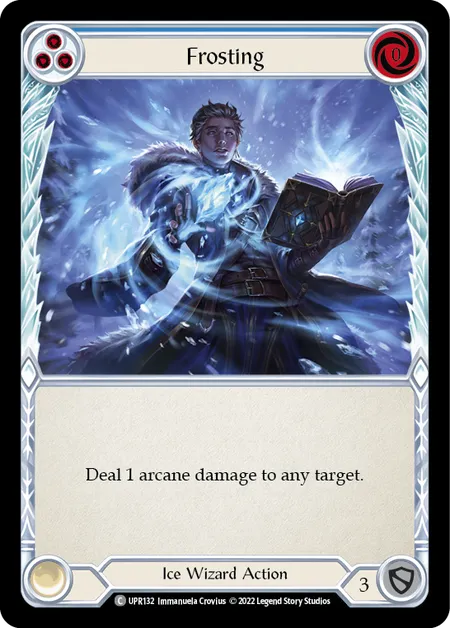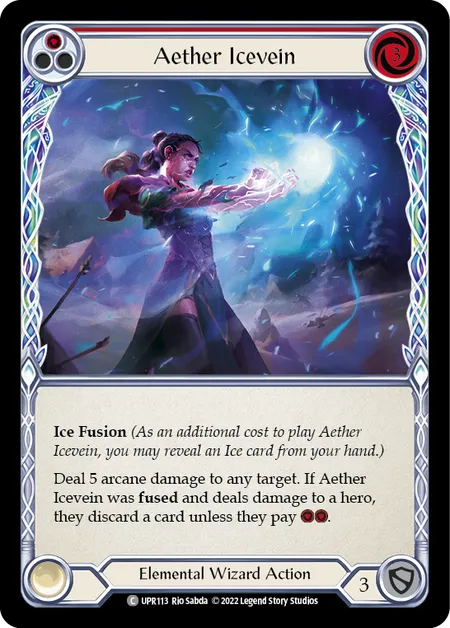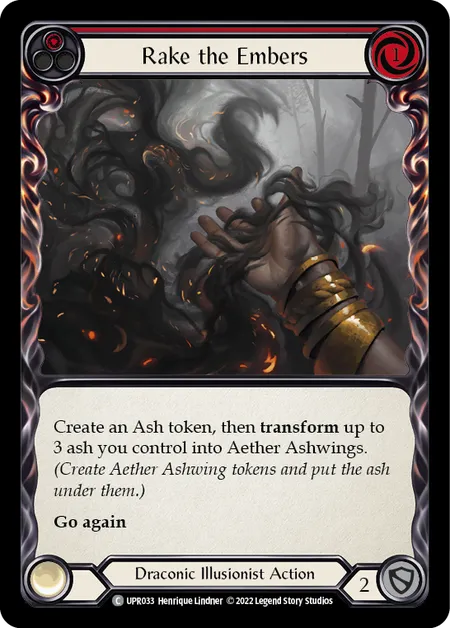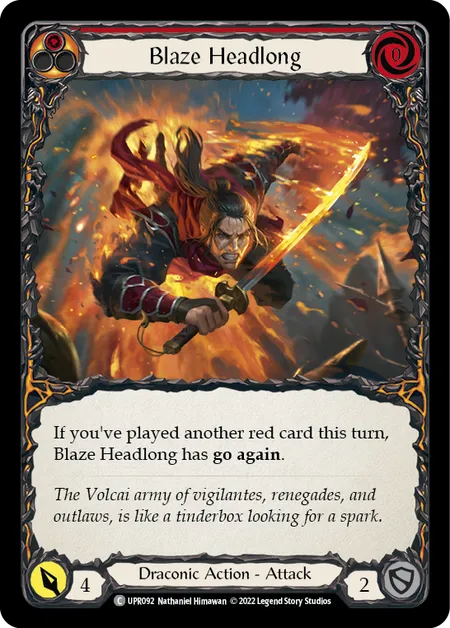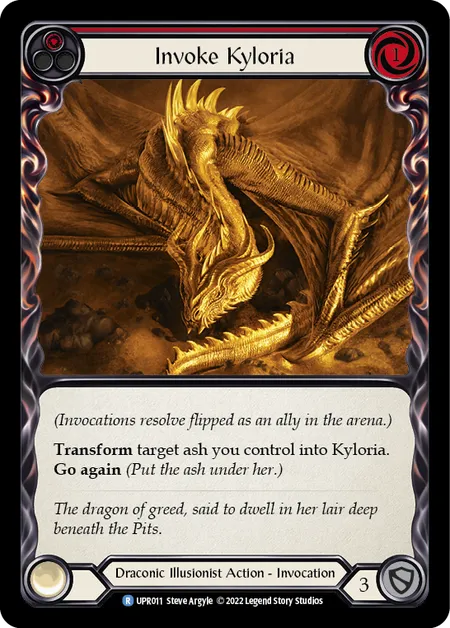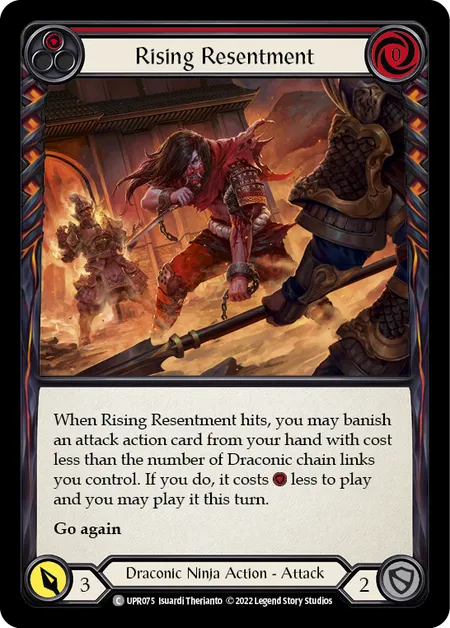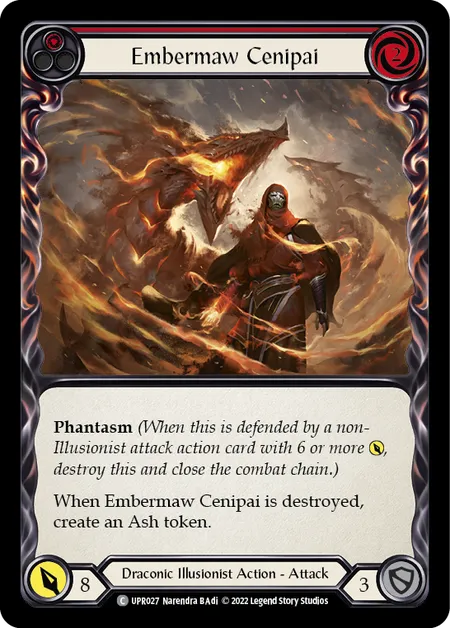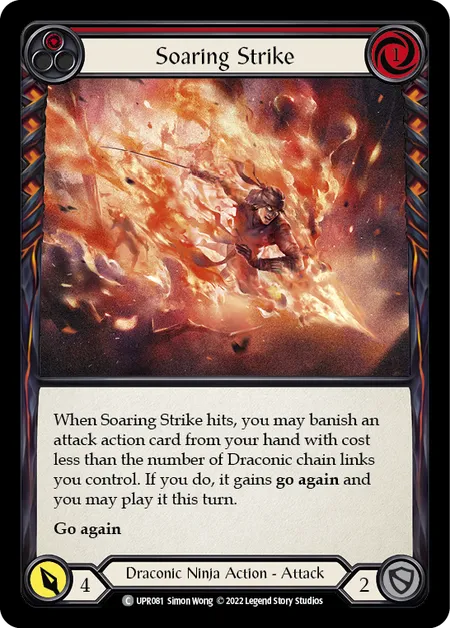We're pleased to welcome Yuki Lee Bender as a guest writer for the Road to Nationals season! In 2021, she took her Lexi, Livewire deck to victory at the Canadian National Championships, and in 2022, once again showcased the power of the Elemental Ranger at the Pro Tour: New Jersey, making the Top 32. As a competitive player, teacher, and writer of strategy content, we're excited to welcome her on board for the season!
With Road to Nationals events just beginning, competitive booster draft is on the minds of many players all around the world. I am personally very excited to play in my first competitive draft events since Canadian Nationals as booster draft is my favorite way to play Flesh and Blood. This article will highlight different strategies you can use to navigate your drafts, and some tools you can use to help decide what options are still available to you mid-draft. While this article focuses on Uprising, these concepts are easily adapted to any limited format, and will hopefully help you for many sets to come.
Finding the Open Lane
When you are navigating a draft, many players may tell you that if you are trying to maximize your chances of winning, you want to “draft your seat” or “find the open lane”. These are both shorthand ways of saying, you want to draft whatever deck people close to you are not drafting. The advantage to doing so is that you will generally face less competition for the cards that go in your deck which means you will have a stronger deck on average as a result. There is no worse feeling than trying to draft a deck when the two people passing to you are in the same deck and you are essentially getting the dregs of every pack.
When trying to draft your seat, you should be especially interested in what the player to your right is drafting. The reason for this is twofold:
- You receive twice as many cards from your right as you do from your left, so cooperating with the player to your right is much more advantageous.
- It is easiest to “pivot” or change what hero you are drafting in pack one, which is also when we receive information about what is being passed to us from our right.
So, how do you know what is “open” or what the players to your right are drafting? Generally this is done by “reading signals” which basically means taking into account both what is being passed to you and what seems to be missing. If you start to notice you aren’t seeing very many Ninja cards around picks 4-6 there is a good chance someone passing to you is drafting Fai and you should try to make sure you aren’t drafting Fai. Similarly, if you keep seeing lots of strong Illusionist cards coming your way picks 4-6, there is a good chance Dromai is open, otherwise, someone else may have picked those cards.
Reading signals is tricky and is a bit of an art; even the best players make mistakes and have bad drafts. The more you practice reading signals the better you will get at it. A few good things to keep in mind when trying to read signals are:
- The later the pick, the stronger the signal - it’s easy for the player passing to you to take a strong card for Dromai and pass a pack with strong Dromai cards early in the pack.
- No one card is a signal on its own - Just because you see one strong card for a class a bit late, it doesn’t necessarily mean that class is open. Look for patterns where you keep seeing strong cards for a class across multiple picks.
- Usually picks 4-6 are the most important signals because it's late enough in the pack for them to mean more, but early enough you can still change heroes.
Staying Open
A concept closely related to finding the open lane is “staying open” which means picking cards in a way that gives you multiple options on what heroes you can decide to draft. The more open you are, the more flexibility you have to draft a wide variety of heroes. This is very important because by keeping your options open for longer, you are also giving yourself more time to get information about what is being passed to you. This greatly improves your chances of finding the open lane. However, one trap players can sometimes run into when trying to stay open is waiting too long to commit to a hero and having to play undesirable cards or maybe even Cracked Baubles in their deck. The goal is to stay open just long enough to find the open lane, but not so long you don't have enough playable cards for your deck.
In order to understand how many picks you can spend speculating before you have to commit to a hero, it is important to look at some of the numbers behind the scenes. Since you draft 3 packs and each pack contains 14 draftable cards, you will end the draft with 42 cards. Most of the time however, the last 1 or 2 picks in each pack are undesirable cards or may not even belong to your hero's class or talent. This means we effectively have 36-39 picks where we have the opportunity to reliably get cards we might want for our deck. Of these 36-39 draft picks, we can assume:
- 30 cards will be go into your deck (minimum)
- 3 cards will hopefully be for your equipment (gloves, chest, legs, the head piece is provided as a token in this set)
- 3-6 cards can be sideboard options or speculative picks for other heroes, maybe a few extra if you do not see, or can not afford to pick equipment.
Generally, I am willing to give up three or four of my early picks to switch heroes if I believe that doing so will put me in a more open deck for the remainder of the draft. I treat these three to four speculative picks like a budget I have for how many picks I can spend to help identify which deck I should be drafting. The larger the number of picks you would have to give up in order to pivot the harder it is to do so. Usually giving up more than three to four cards runs the risk of being short on good cards for your deck.
Three or four picks might not sound like a lot of wiggle room, but I think you will start to see that it might be more than you think! Let’s look at some specific examples to get a better feel for what your options are, depending on how the first few picks of your draft go.
Starting Generic
Strong generic cards are very powerful picks early in a draft because they can always be played regardless of what hero you end up drafting. Additionally, picking a generic card effectively means you aren’t spending any of your three to four speculative picks. In this sense they give you a high degree of flexibility, and allow you to receive more information from the players to your right before having to commit to a hero. For example, consider our position if we start the draft with these three picks:
This is easily one of the most comfortable spots to be in a draft going into pick four. You have three strong generics you would be happy to play in any deck. From here you can easily decide to play any of the three heroes and you have plenty of time to read signals from the players to your right. From this position I would be happy to start speculating on a few different classes by picking the most powerful class cards I see for picks 4 through 6 and then lock in whichever one seems to be most open.
Keep in mind that just because a card is generic doesn’t always mean it fits into all decks equally well. For example, Blue Sigil of Protection and Blue Healing Balm fit very nicely into Iyslander’s game plan, because they can be played at instant speed from arsenal on her opponent’s turn, but they mostly act as blue cards that block two in Dromai or Fai. Whereas, Blue Sift and Critical Strike are much more class neutral cards, because they have the floor of being a blue that blocks for three, which any deck will be interested in having. If you make a habit of trying to think about which decks you would be happy to play each generic card in, you will discover that sometimes certain cards are almost secret class cards.
Committing Early
Sometimes the difference in power level between the best generic and the best class card is so big that you may want to take the class card instead. There’s nothing wrong with that and it is often correct to do so! Once you’ve already taken a class card, any subsequent cards you see for that class are slightly more attractive because they go with the cards you already have. This can often lead players to focus on a particular hero very early on, and is one of many ways you can start your draft. For example, let us consider starting with Spellfire Cloak, Blue Aether Hail and Frosting as your first three picks.
This is a very powerful start, because Spellfire Cloak is a very strong piece of equipment and blue Aether Hail and Frosting fit perfectly into Iyslander’s game plan of playing blues from her arsenal on her opponent’s turn in order to turn on Waning Moon. However, this start can also be quite dangerous, because you have very little flexibility. Should you decide to start drafting Fai or Dromai instead, you don’t get to play any of your first three picks. Another way of thinking of this, is that if you want to draft Fai or Dromai you’ve already used up three of your speculative picks, meaning we have to commit very quickly to one of them despite not having any Fai or Dromai cards in our pool!
From this position it can be very tempting to “force Iyslander” by continuing to draft any good Iyslander cards you see, regardless of what is being passed to you. Doing so can sometimes be correct and may reward you with a very strong deck, provided that wizard happens to be open and you keep receiving wizard cards from your right. In this scenario you’ve effectively wasted no picks speculating and you get to play all of your early picks, sounds fantastic right? Be careful though, forcing can be quite risky because if someone to your right has also decided to draft wizard, you might find yourself without strong options to pick as it gets later into pack one and pack three. Generally forcing is a high risk, high reward way of drafting, that can lead to more 3-0 decks but also more 0-3 decks.
It is worth noting that when you force a hero you may very well discourage players to your left from drafting the same hero as you. This often means you may be rewarded with strong cards in pack two. This can sometimes partially make up for having slim pickings in packs one and three from your right. But, usually being cut from your right leads to weaker decks as 26 of your 48 cards will be passed to you from the right (13 cards each pack). For this reason I usually focus on reading the signals being sent to me rather than trying to send signals to my left.
A second option you have in this position is to hedge and give yourself more options by drafting generic cards that are playable in multiple decks such as the aforementioned Red Scar for a Scar or Red Flex. This way you get to receive some additional information from your right about what decks are being drafted before you decide if you want to fully commit to wizard.
Your final option would be to try and use some of your speculative picks to draft some key cards for another hero. If you are seeing some strong Dromai cards, why not pick them up and put yourself in a position where you can comfortably draft either Iyslander or Dromai? While it might feel strange given your start, there’s nothing wrong with having your first 6 picks look something like:
From this position, you need to decide on either Dromai or Iyslander in the next one or two picks, because regardless of which hero you draft you have already spent three of your speculative picks. However, you’ve given yourself time to get more information from the players passing to you before committing. In this particular spot, I would lean towards continuing to drafting Dromai if I keep seeing appealing cards for her, because picks later in the pack are stronger signals than picks early in the pack.
Mix and Match
Every draft you are presented with different options, and you don’t always have the luxury of starting with three generics or three cards in the same class. Because you generally want to make sure your first picks are spent on powerful cards, you may find yourself a variety of cards that don’t belong in the same deck. For example, your first four picks of pack 1 could be Red Scar for a Scar, Heat Wave, Red Billowing Mirage and Red Aether Icevein.
This can sometimes feel like an intimidating place to be in your draft, because you don’t have a clear direction you are headed in. However, let’s take stock of your position and figure out what your options are. With these cards in your pool, regardless of whether you pick Fai, Iyslander or Dromai, you will get to play two of your picks and you will have spent two of your speculative picks. This is a spot I’m personally quite fond of being in, because I have quite a lot of time to get a feel for what deck might be underdrafted at the table. In this position I would just draft the most powerful class cards I see for the next two picks and hope a clear choice presents itself to me.
For example, let’s say you followed up your first four picks with Red Dust Runner Outlaw and Red Rake the Embers for picks five and six respectively. At this point if you draft Iyslander you have to give up four of your picks which is starting to get to the point where it’s hard to pivot. However, choosing to commit to Fai or Dromai only gives up three of your picks and you can decide on which one you want to draft based on the signals from your first six picks, as well as the cards you see in the pack for pick seven. This is a perfectly fine place to be.
Draconic Cards
One card type I have not mentioned thus far are Draconic cards. Draconic cards you can think of as effectively Dromai and Fai cards, and are yet another useful way to hedge in the early parts of a draft. For example you could start a draft with the following first six picks:
Here, it is probably too late to draft Iyslander since you would have to give up all six cards in your pool to do so. However, you have four solid cards for either Fai or Dromai and have only used up two speculative picks in either case. This is a flexible start and gives lots of time to decide on which of the two heroes you would rather draft.
Next time you sit down and booster draft, try taking stock of how many speculative picks you have used and what heroes you are still able to draft after each pick you make. Hopefully this framework can help you successfully navigate Uprising booster drafts at your Road to Nationals events and beyond. Thank you for reading and happy drafting!
Yuki Lee Bender is a competitive Flesh and Blood player and author of content relating to gameplay and strategy. The opinions expressed in the above article are her own and do not necessarily reflect the views of Legend Story Studios.

